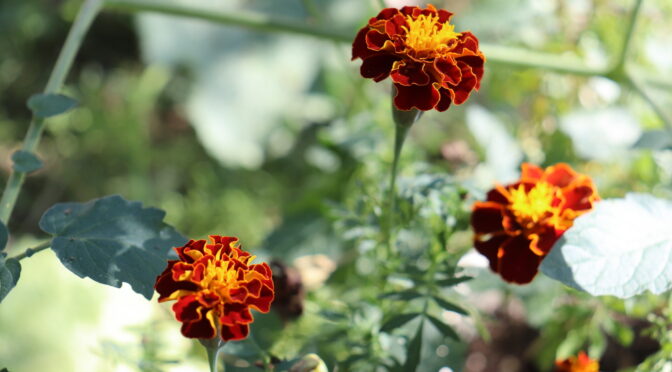Easy to grow, beautiful, and handy to have around, marigolds have earned a spot in many home gardens. Their bright, ruffled blooms and rich, musky smell make them alluring to humans but off-putting to many pests. They are among the easiest seeds to save. There’s very little processing. You just need to harvest the seeds and let them air dry for winter. Here’s how to save marigold seeds step by step so that you can have plentiful blooms all next season, too!
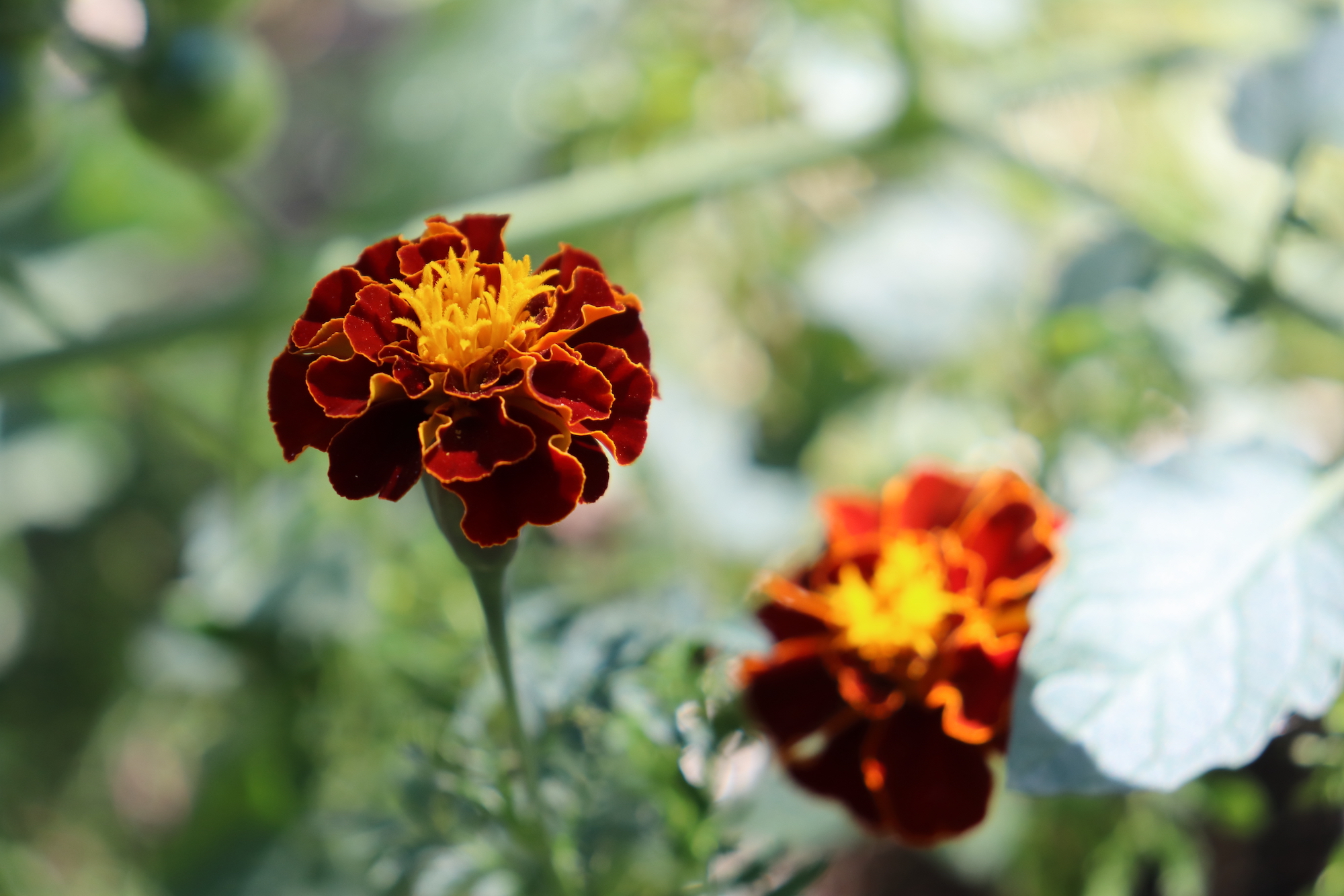 Choose an Open-Pollinated Marigold Variety
Choose an Open-Pollinated Marigold Variety
If you have marigold seeds from us, you’re all set; all our flowers are open-pollinated. However, if you purchased seeds somewhere else, you may want to double-check that your flowers are an open-pollinated variety rather than a hybrid.
Hybrids may not produce flowers that resemble what you grew; sometimes, they revert to what one of their two parents looked like. However, if you don’t mind a little surprise variation, you’re always welcome to save seeds from hybrids!
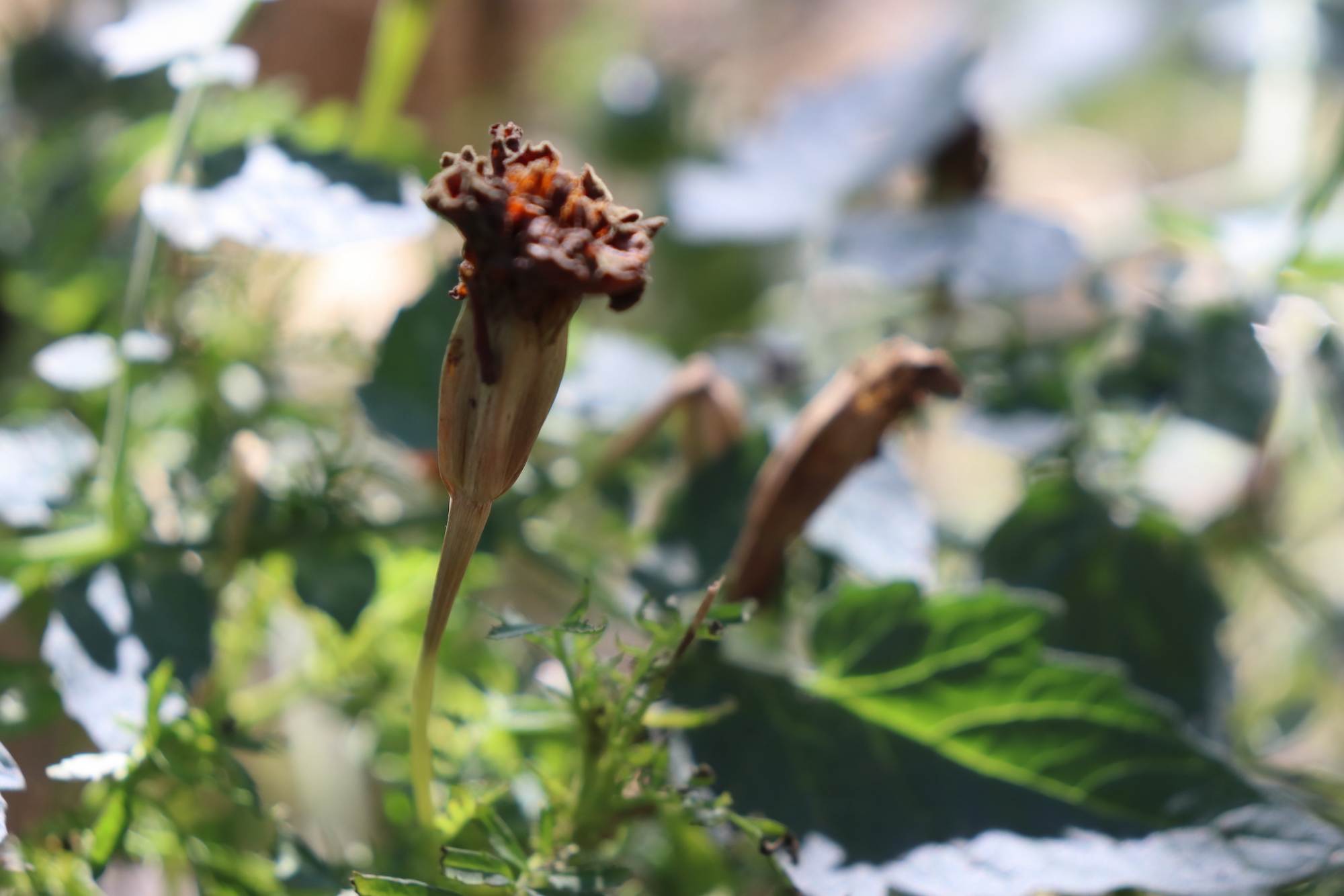
Wait Until Your Marigolds Are Mature
As with any plant, you want to ensure the seeds are fully mature before you harvest them. For marigolds, you want to wait until the petals have dried out and the base of the bloom, the seed pod, has started turning brown. Letting the seed pod get as brown and dry as possible is best. However, in rainy years, you may need to harvest the seed pods while they’re still green on the bottom. The seeds may mold if it’s a rainy year and you wait too long.
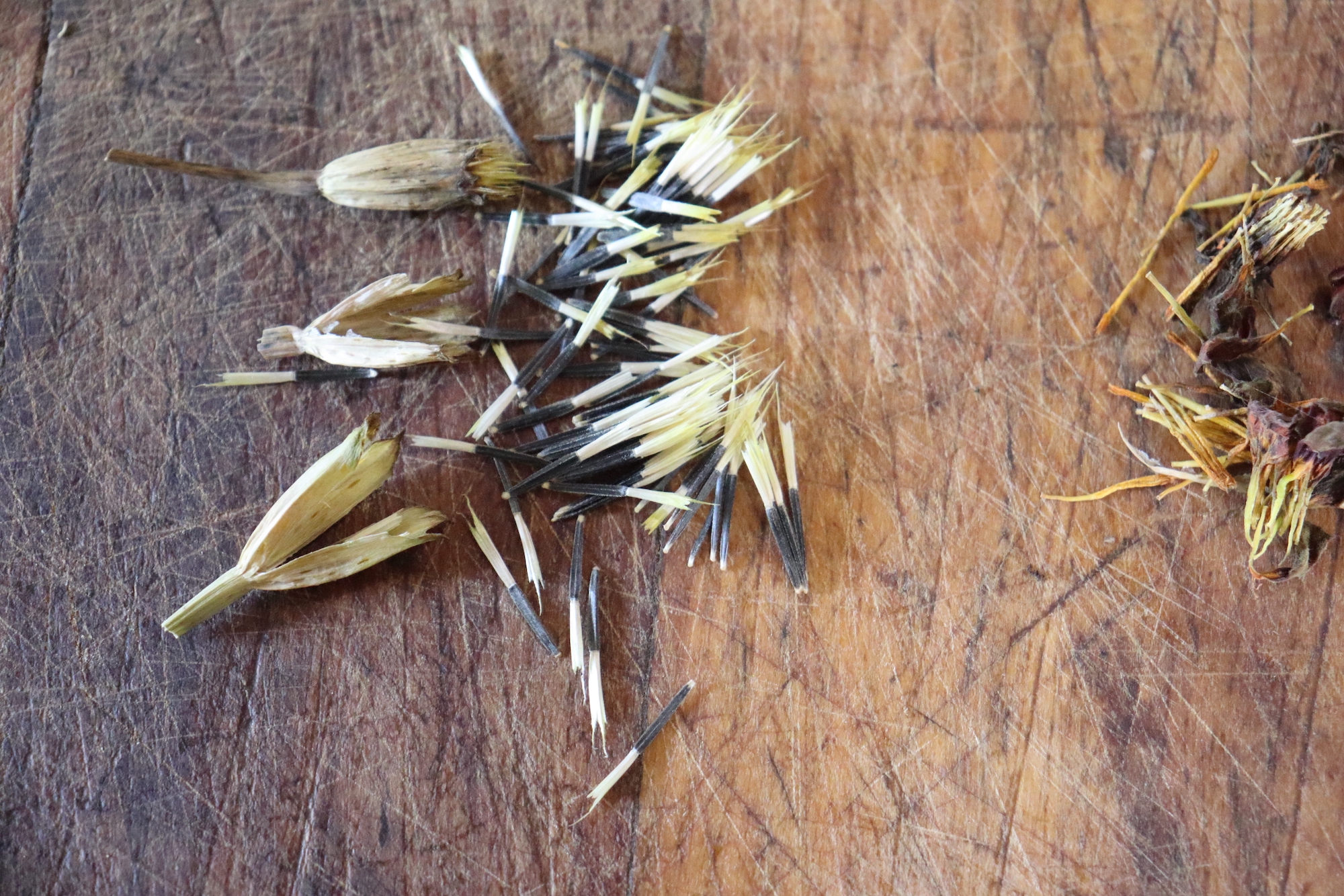
Remove the Seeds
Next, you want to remove the seeds from the pods. First, pull the petals off. Usually, they come off easily, and you can set them aside for composting. Then, you can split or peel the seed pod open to pull out the seeds. When the pods are dry, this is easy.
Marigold seeds have an odd appearance; they always remind me of porcupine quills, but don’t worry, they’re not sharp! They’re long and thin, almost needle-shaped, with a black or dark gray tip and a white or cream-colored top.
Pick out any leftover pieces of petals and pods as best you can.
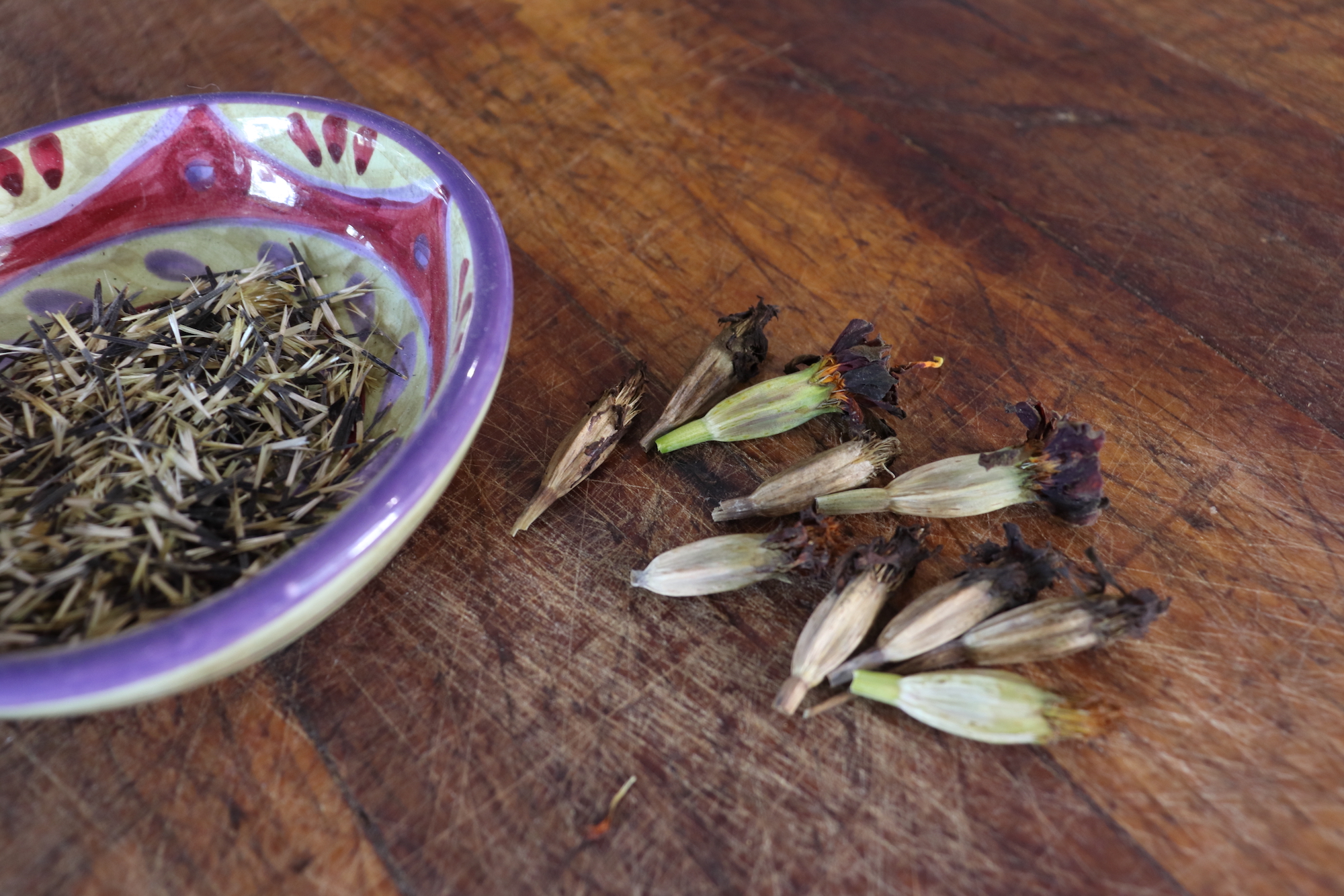
Dry the Marigold Seeds
After your seeds are clean, it’s time to dry them. They may seem dry already, but they still have moisture, and they may mold in storage without proper drying. Spread the seeds on a plate or towel and let them dry for a couple of weeks.
Label and Store the Seeds
After your seeds are fully dry, you can package them in an airtight container for storage. Keep them somewhere cool and dark. Make sure to label your container with the variety and date.
Follow these steps to save marigold seeds for next year’s garden. In the spring, you can use your seeds to start marigolds indoors for early blooms. Marigolds germinate quickly, so you can also direct sow them. Many folks have found they make excellent companion plants, and you can plant them alongside many vegetables and herbs, including squash, tomatoes, beans, and basil. As flowers mature next season, you can repeat this process to save marigold seed.

